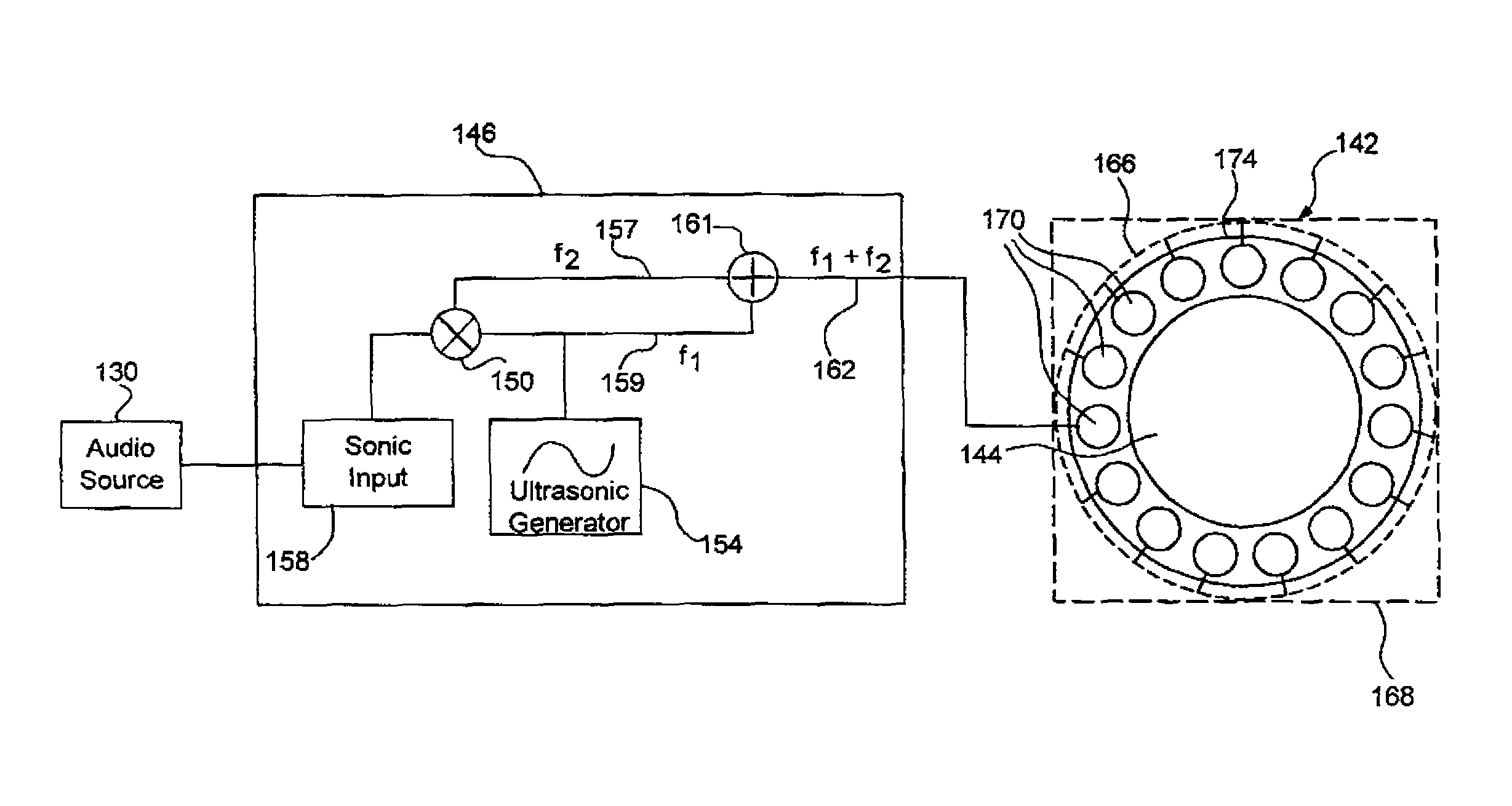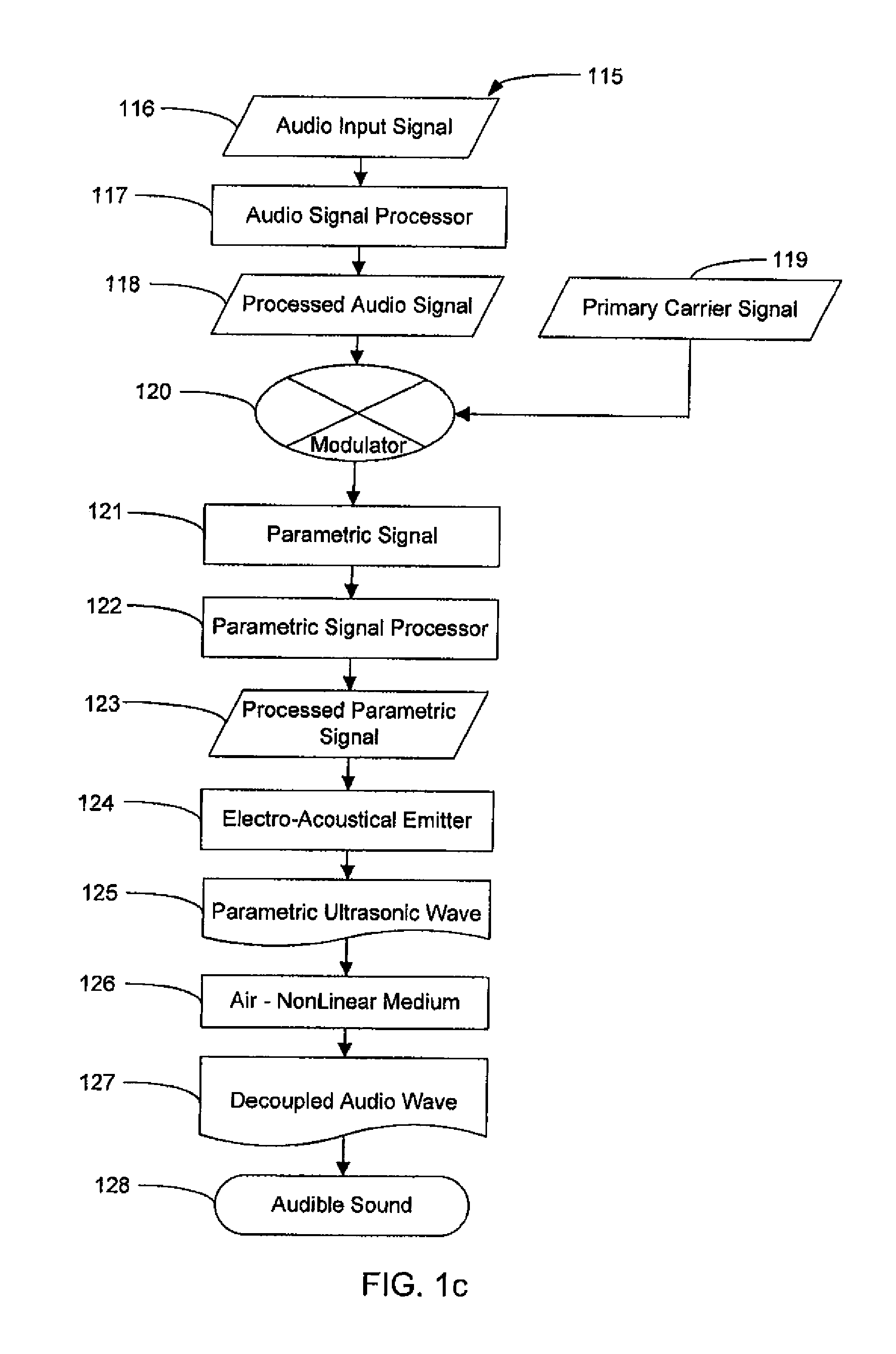Parametric loudspeaker with improved phase characteristics
a phase characteristic and loudspeaker technology, applied in piezoelectric/electrostrictive transducers, instruments, transducer types, etc., can solve the problems of poor matching of resonant frequencies of the emitter with sound output, low-power output devices with limited applications, and limited popularity of film emitters, so as to increase the parametric output, and maximize the effect of parametric outpu
- Summary
- Abstract
- Description
- Claims
- Application Information
AI Technical Summary
Benefits of technology
Problems solved by technology
Method used
Image
Examples
Embodiment Construction
[0038]Because parametric sound is a developing field, and in order to identify the distinctions between parametric sound and conventional audio systems, the following definitions, along with explanatory diagrams, are provided. While the following definitions may also be employed in future applications from the present inventor(s), the definitions are not meant to retroactively narrow or define past applications or patents from the present inventor(s), their associates, or assignees.
[0039]FIG. 1a serves the purpose of establishing the meanings that will be attached to various block diagram shapes in FIGS. 1b and 1c. The block labeled 100 can represent any electronic input audio signal. Block 100 will be used whether the audio signal corresponds to a subsonic signal, sonic signal, ultrasonic signal, or a parametric ultrasonic signal. Throughout this application, any time the word ‘signal’ is used, it refers to an electronic representation of an audio component, as opposed to an acoust...
PUM
 Login to View More
Login to View More Abstract
Description
Claims
Application Information
 Login to View More
Login to View More - R&D
- Intellectual Property
- Life Sciences
- Materials
- Tech Scout
- Unparalleled Data Quality
- Higher Quality Content
- 60% Fewer Hallucinations
Browse by: Latest US Patents, China's latest patents, Technical Efficacy Thesaurus, Application Domain, Technology Topic, Popular Technical Reports.
© 2025 PatSnap. All rights reserved.Legal|Privacy policy|Modern Slavery Act Transparency Statement|Sitemap|About US| Contact US: help@patsnap.com



